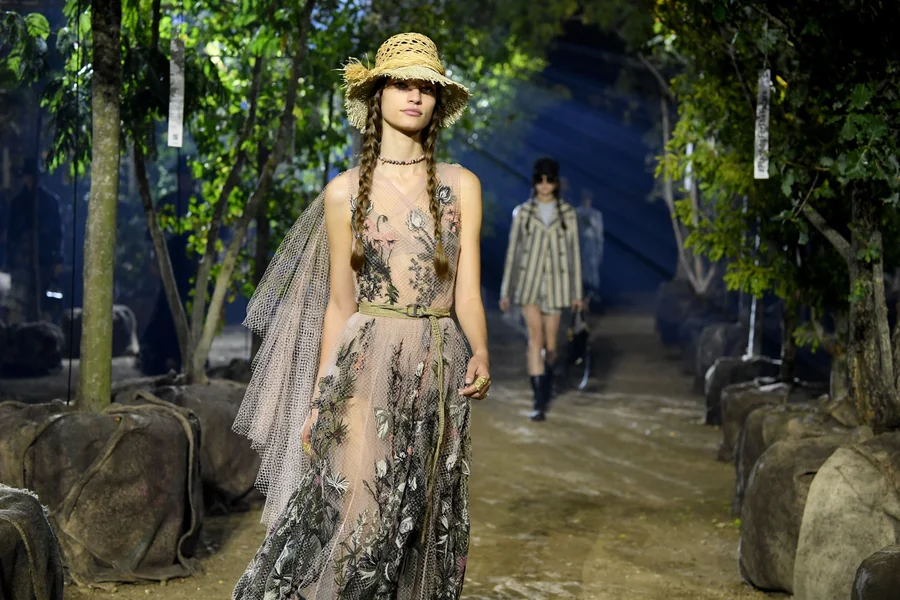The Sustainable Fashion Trends Transforming Style

Lately, the main trend in fashion has revamped into making sustainability a key decision, not just something for a minor group. Both consumers, brands and designers are aware that switching to eco-friendly actions is now very necessary to help the environment and ensure ethical manufacturing. Today, sustainable fashion trends are not just about green initiatives; they are shaping the future of style, influencing everything from materials and production methods to consumer behavior and corporate responsibility.
The Rise of Sustainable Fashion
Because of fast cycles, huge production and short-lived trends, the old fashion model has proven to be harmful to both the environment and society. Changes in the environment and lower supplies of resources are becoming noticeable which makes it impossible for fashion to ignore its high carbon impact. Seeing this has caused a change in thinking and now sustainability is the industry’s standard practice.
A lot of influential and young brands are now including sustainability in their main goals. Doing this means using less water, less waste is produced, clean sources of energy are used and everyone involved is treated fairly. Being circular means promoting the recycling, upcycling and lengthening of fashion life through design. It shows how both thinking about and using fashion are changing.
Innovative Sustainable Materials
One of the most significant drivers of sustainable fashion trends is the advent of eco-conscious materials. Conventional cotton and polyester use a lot of resources and pollute which is why designers are avoiding them for clothing.
It is turning away from materials such as polyester and choosing organic cotton, hemp, bamboo and Tencel which are grown with fewer pesticides, need limited water and biodegrade. Many people are choosing recycled plastic bottle fabrics, regenerated nylon and upcycled textile waste these days. They are effective and at the same time save the environment.
Also, ideas like laboratory-made leather and fabrics from mushrooms are helping to develop products that are lighter on the environment and don’t hurt animals. Biofabrication is a good example of how fashion aims to unite artistic ideas with concern for the environment.
Slow Fashion
Putting sustainability in fashion means making clothes that are well-made, durable and fashionable forever rather than lots of trendy, disposable items. Following slow fashion, people choose to buy fewer high-quality items that will last many years. This makes us think twice about fast fashion which encourages throwing out clothes after a little use.
Following slow fashion, people want goods made in an ethical way, supporting people who take time to create artisan and locally made items. This practice also supports fixes, secondhand sales and renting clothes which keeps the clothes in use longer and reduces things heading to landfills. Many customers now seek transparency from companies about how and where their products are produced and manufactured which puts pressure on brands to care about the environment.
Circular Fashion
Using circular thinking is very important in the pursuit of sustainability in fashion. Instead of just producing, using and discarding, circular fashion works to repeatedly use and reuse materials. Clothes are being made by brands to be easily recycled, so that they can be unmade and remade into new fabrics.
A number of companies have introduced return programs and clothing recycling projects so that their customers can send back their worn clothes for another use. There are now approaches like chemical recycling and fabric-regeneration made to reuse mixed-fiber textiles which people had trouble recycling before.
It also helps support new business ideas such as clothing subscriptions and selling previously owned items which cuts back on buying new clothes and helps people make good environmental choices.
Transparency and Ethical Practices
Sustainability is no longer just about materials and waste management; it extends deeply into the realm of social ethics and transparency. Consumers today demand that brands disclose their sourcing, labor conditions, and environmental impact openly.
This demand has led to the rise of certifications such as Fair Trade, GOTS (Global Organic Textile Standard), and B Corp, which verify ethical and sustainable practices. Brands are now investing in traceability technologies like blockchain to provide verifiable supply chain information.
The integration of these ethical standards into mainstream fashion reflects the growing recognition that sustainability encompasses human rights, fair wages, and safe working environments, alongside environmental stewardship.
Technology Empowering Sustainable Fashion
Technological advancements are critical to accelerating sustainability in fashion. From 3D design and virtual sampling reducing fabric waste to AI-powered demand forecasting minimizing overproduction, technology plays a pivotal role in transforming the industry.
Digital platforms also facilitate secondhand sales, clothing swaps, and rental services, making sustainable options more accessible. Moreover, innovations in biodegradable dyes, waterless dyeing techniques, and eco-friendly printing processes reduce pollution and resource consumption.
The rise of smart textiles and wearable technology offers potential for durability, adaptability, and multi-functionality, which align with sustainable principles by enhancing garment lifespan and utility.
Consumer Awareness
The growing consumer awareness of environmental issues has been a powerful catalyst for sustainable fashion trends. Shoppers are increasingly scrutinizing the impact of their purchases and choosing brands that align with their values.
Social media and influencer advocacy have helped disseminate information about sustainability, fostering communities focused on conscious consumption. This shift in consumer mindset has pressured brands to prioritize eco-friendly practices and has given rise to a new generation of shoppers who demand accountability.
As a result, sustainable fashion is no longer confined to niche markets but is gaining mainstream acceptance, shaping retail strategies and product offerings globally.
Challenges and Future Directions
Despite impressive progress, the path toward fully sustainable fashion is complex and challenging. Issues such as greenwashing, limited recycling infrastructure, and the environmental cost of some sustainable materials require ongoing attention.
The industry must continue investing in innovation, education, and systemic change to overcome these hurdles. Collaboration between designers, manufacturers, policymakers, and consumers is essential to create scalable solutions.
Looking ahead, sustainability will remain a dynamic and evolving standard, integrating deeper into fashion’s DNA and inspiring new creative approaches that celebrate style and responsibility hand in hand.
FAQs
What defines sustainable fashion?
Sustainable fashion focuses on reducing environmental impact and promoting ethical practices throughout the clothing lifecycle, including sourcing, production, and disposal.
How do sustainable materials benefit the environment?
Sustainable materials typically use fewer resources, avoid harmful chemicals, and are biodegradable or recyclable, helping to lower pollution and conserve natural resources.
Is sustainable fashion more expensive?
While initial costs may be higher due to quality and ethical production, sustainable fashion promotes durability and long-term savings by reducing frequent replacements.
Can recycled fabrics be as durable as traditional ones?
Yes, many recycled fabrics meet or exceed durability standards while reducing waste and resource use.
How can consumers support sustainable fashion?
Consumers can buy from ethical brands, choose quality over quantity, participate in resale or rental programs, and care for their garments to extend their life.








